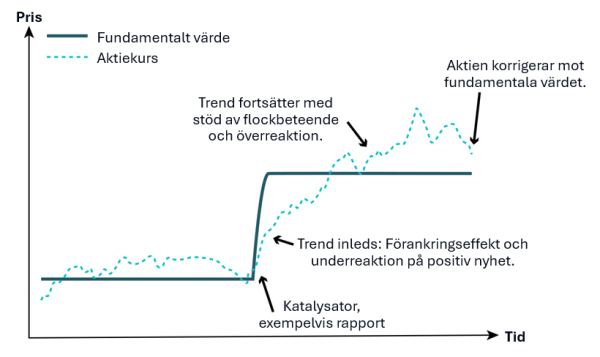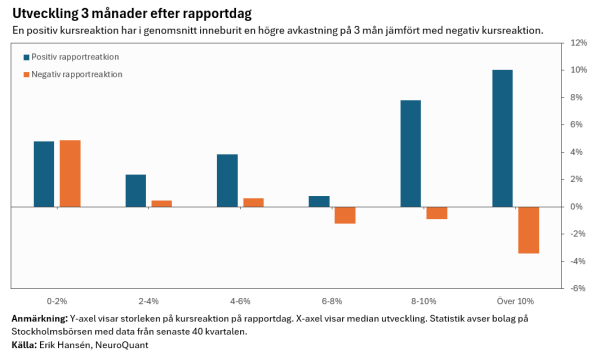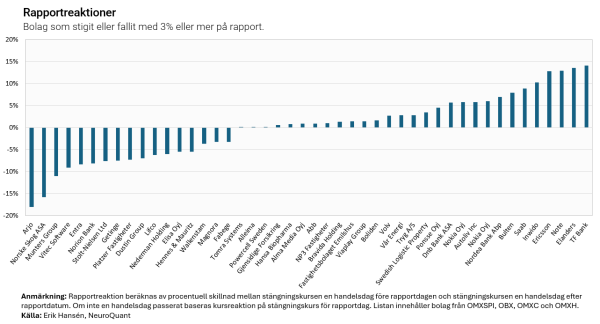Important insights into earnings report reactions

Finally a reporting period with new data from companies for investors to absorb. It is often said that the market is quick to price in new information. But is that really true or is there an anomaly that we can keep in mind during reporting periods?
Something that research has long highlighted is that investors tend to underreact to new information, which creates a drift in the stock. This is usually called Post–earnings-announcement drift.
Anomalin förklarades av J. Ball & P. Brown, ‘An empirical evaluation of accounting income numbers’, Journal of Accounting Research, 1968.
Post Earnings Announcement Drift (PEAD) is a phenomenon in financial markets where stock prices tend to continue moving in the same direction as an initial reaction to a company's earnings report.
This means that if a company reports better-than-expected results and the stock price rises immediately after the announcement, the stock price tends to continue to rise in the following weeks or months. Similarly, if the company reports worse-than-expected results and the stock price falls, the stock price tends to continue to fall for some time.
Here are some key points about PEAD:
- Initial reaction: After a company's earnings announcement, the market reacts immediately to the information. If the report exceeds expectations, the stock price can rise quickly; if it underperforms, the price can fall quickly.
- Continued operation: After the initial reaction, the stock tends to continue moving in the same direction for a period of time, often several weeks to months. This is PEAD.
- Causes: There are several theories as to why PEAD occurs. One is that the market is slow to fully integrate new information into the stock price. Another theory is that investors are overly conservative in their reaction to new information, leading to a gradual adjustment in the stock price.
- Strategies: Investors and traders can try to exploit PEAD by buying stocks that have reported better-than-expected results and selling or shorting stocks that have reported worse-than-expected results.
- Efficient market hypothesis: PEAD challenges the strong form of the efficient market hypothesis (EMH), which states that all available information is always reflected in stock prices immediately.
Does the anomaly still exist?
Let's analyze the statistics for companies on the Stockholm Stock Exchange. We examine the median trend based on data from the last 30 quarters.
The effect is particularly strong for companies that have had a sharp price increase in connection with a report – these often tend to continue to rise over the following three months.
How should we think?
It's easy to think that a stock that rose on a report has already pulled back and that you "missed" buying. However, there is nothing in the statistics to support this as a rational way of thinking.
Of course, anything can happen, and statistics only show average trends. Chance is something we always have to accept. But keep in mind that what often feels right is rarely correct in the stock market. If we act like everyone else, it will be difficult to be better than average.
We shouldn't be afraid to buy stocks that have risen on their reporting day. Investors tend to underreact to new information, and the stock often moves in the same direction as the report reaction.
Report reactions during this reporting period
So far during the reporting period, there have been more gains than losses for our holdings in model portfolios. Major gains in Ericsson and TF Bank, among others.
Up until the close on Tuesday, October 22, just under 20% of companies in Sweden had reported. Of these, 32% had beaten earnings expectations and 54% had a positive report reaction.
Below we see companies that rose or fell by 3% or more on the report. I have included companies from OMXSPI (Sweden), OBX (Norway), OMXC (Denmark) and OMXH (Finland).




